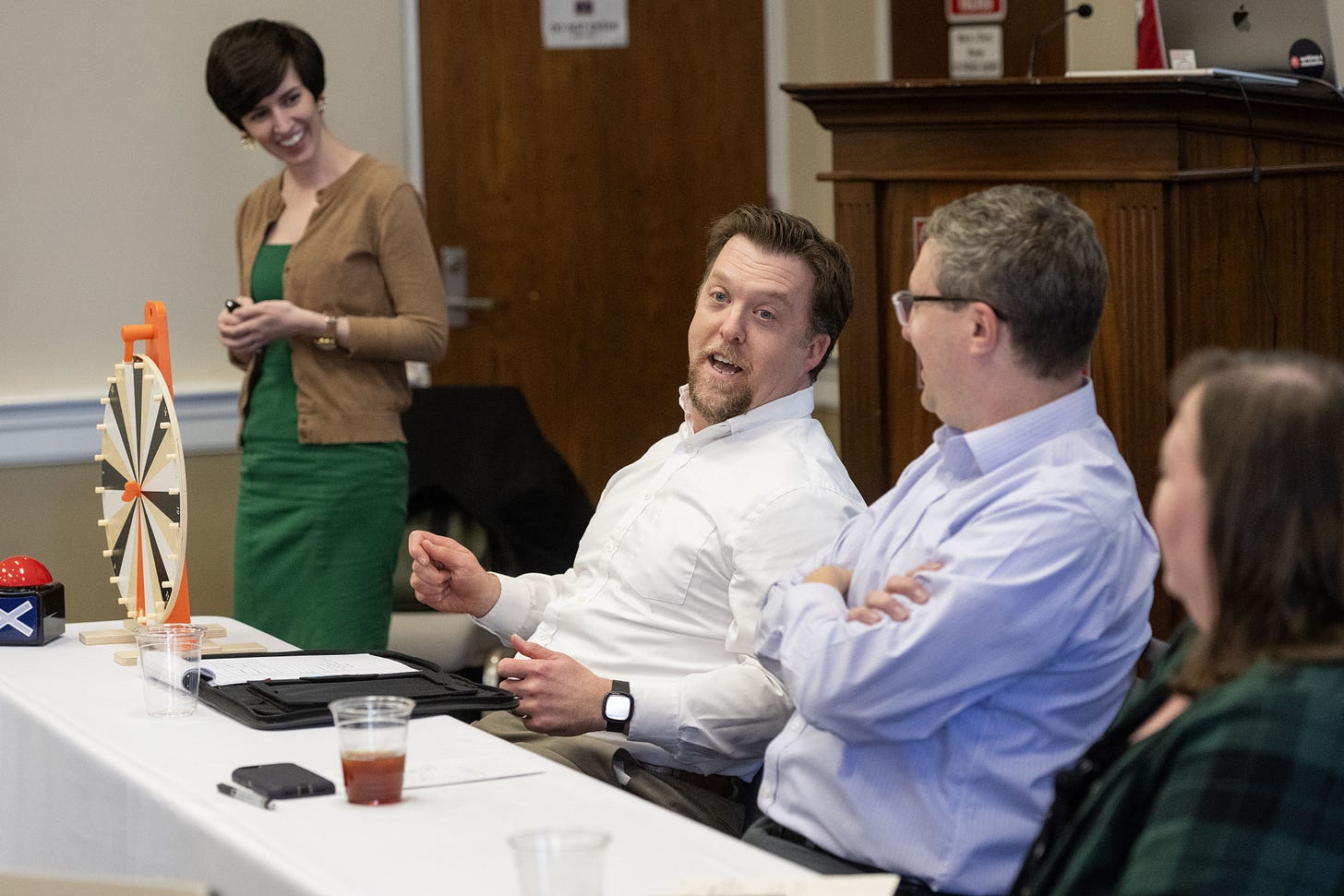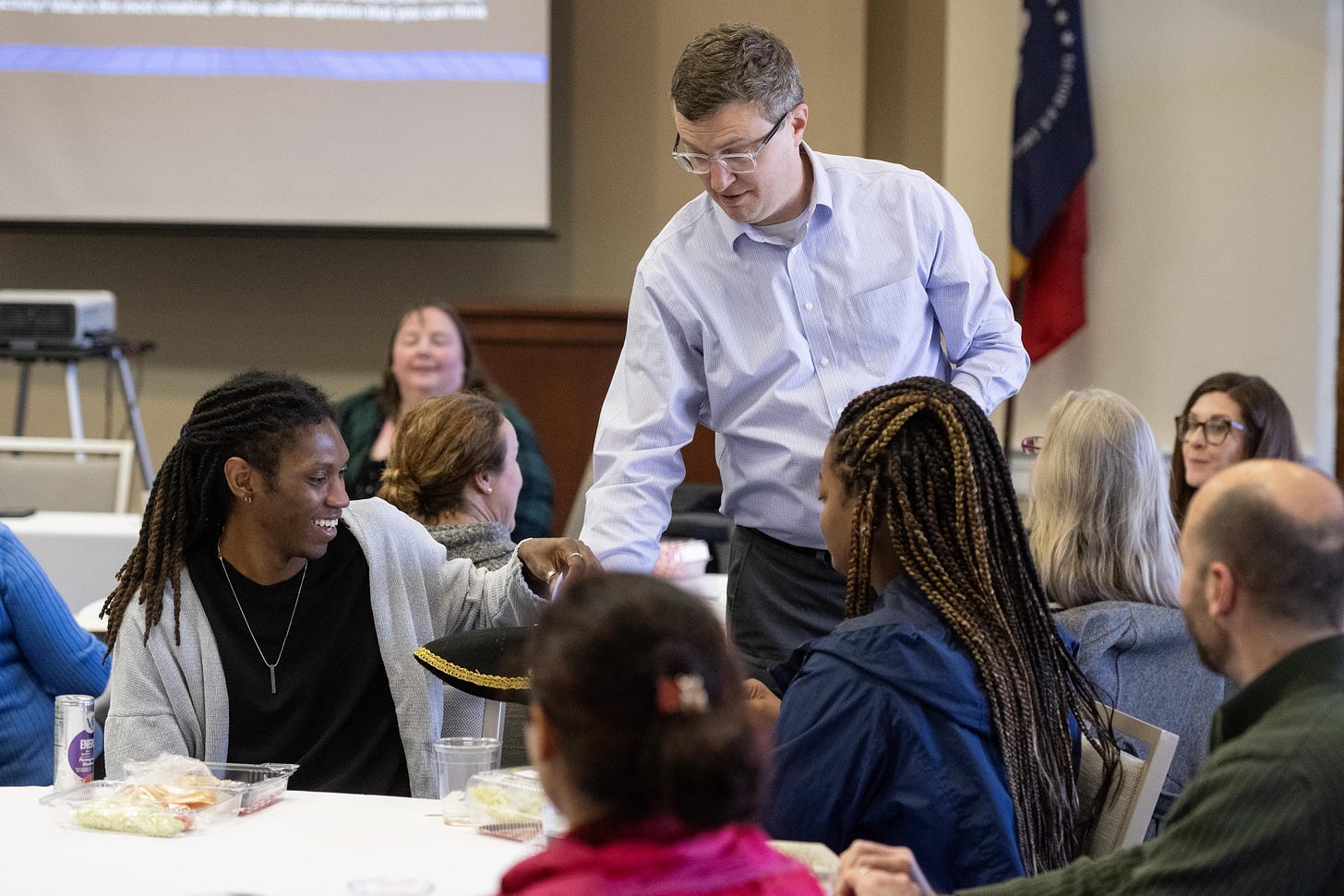At CETL, many of our workshops are open to the entire university community. That means we’re often presenting information about teaching techniques and strategies to a highly diverse group of instructors. In the audience of one workshop, we might have a tenured faculty member teaching a 200-person Biology lecture, a first-time TA for a psychology course, and an adjunct faculty member teaching a small creative writing seminar.
All these contexts affect how we teach. So it’s no surprise that after our workshops we often hear participants say, “That’s an interesting idea—but I don’t know how it would work in my class.” One of the biggest barriers instructors face when they want to make changes to their teaching is that they aren’t always sure how the general or abstract strategies we share might apply in their specific course contexts. Of course, we can make some recommendations. But we also think helping instructors get creative with potential teaching applications will result in stronger and more authentic new practices for the instructors who want to implement them.
That’s how we hatched the idea for “Yes, And: Igniting Your Pedagogical Imagination,” a workshop the CETL team facilitated on January 31. It’s built on a concept we’re calling “pedagogical improv”: the ability to take a new teaching technique and play around with it, to get creative even when you don’t have a script for how, exactly, to implement the technique.
Rather than talk about pedagogical improv, we thought it would be more exciting to show it in action. So, we turned the workshop into a game show, in which CETL staff members competed to see who could take a teaching technique and apply it to their course in the most creative way. I chose a teaching technique at random, and members of our distinguished cross-disciplinary panel—Josh in humanities, Liz in social sciences, and Derek in STEM—each generated a plan for how they would employ the technique in their courses.
The randomly selected technique for this workshop’s improv was the “gallery walk.” Here’s what I read to the panelists:
In a gallery walk, instructors hang questions, prompts, problems, images, documents, student work, or other thinking aids on pieces of paper around the room. Students circle the room, individually or in groups, responding to each station by annotating the paper with their thoughts, questions, or answers, and writing responses to the annotations of previous students.
Cue the Jeopardy! music. At this point, panelists had 4-5 minutes to jot down some ideas about how they would use the gallery walk in their classes.
We had a lot of fun hearing their responses. For his large lecture math course with a challenging classroom layout, Derek came up with a kind of virtual gallery walk. Groups of students might write original word problems relevant to the day’s topic and post them to a shared slide deck, followed by a time for students to attempt to solve or perhaps comment on their peers’ problems, without ever leaving their seats. Josh shared an activity in which students would walk around the room annotating sheets of paper with major course terms and concepts to provide facts, definitions, or examples—whatever they could remember—creating a crowd-sourced study guide or test review. Liz used her gallery walk to make a somewhat dull topic, government bureaucracies, more entertaining. She imagined assigning each student a specific federal agency to research and prepare a poster or infographic on. The students would then circle the room to peruse each others’ posters, leave feedback, and answer specific questions about the content (e.g. Would you increase or decrease funding to this agency?) in preparation for a larger discussion about how our federal agencies are valued.
I would be remiss, and Derek would be mad, if I didn’t mention that he was the audience-chosen winner of our competition for most creative application of a teaching technique!
But as interesting as these applications were, it was even more interesting to hear about the improvisational methods the panelists used to apply the given teaching technique to their unique course contexts. Derek’s process involved considering the constraints he had to work with (a large lecture classroom that didn’t allow for much physical movement) alongside the principles behind the technique. He decided that the most important part of the gallery walk was that students 1) created something and then 2) commented on the work of other students. Physical constraints meant that he couldn’t put that work up on a wall, but he could circulate it digitally—without sacrificing the principle behind, or the benefit of, the activity.
Josh spoke to the value of taking a “yes, and” approach; that is, not immediately rejecting a technique as inapplicable or inappropriate to your course context but rather extending the line of thought to see what you come up with. He noted that he actually hates gallery walks, and would be tempted to reject the practice out of hand. But by staying open and getting creative—saying “yes, and…”—he was able to come up with an activity he might even use in his course this semester.
Liz discussed not only how she adapts different techniques to her in-person courses but also how she translates practices designed for the in-person classroom to online contexts. She explained that she would approach an online gallery walk by, like Derek, discerning the purpose of the activity and then identifying digital tools that might help accomplish that purpose without the necessity of physical presence. Liz and other panelists also spoke about the importance of teaching communities: finding others who have tried a technique you’re interested in and then adapting their methods to create something new.
After our discussion, participants had a chance to practice improv-ing with techniques and courses of their own, which they drew, at random, out of a hat.
They then shared how they adapted, for example, a podcast assignment to a first-year math course or a science communication project to a class on law.
At the end of the session, participants shared takeaways from the workshop, emphasizing the values of openness, flexibility, and creativity in our teaching. My favorite takeaways? “Don’t be afraid to try it” and “My class is only limited by my own imagination.”
We hope this blog post has ignited your imagination! And we hope to run this workshop again. If you’re a UM instructor and you’d like to serve as a panelist for our next discussion, email us at cetl@olemiss.edu.
If you’re at another CTL and would like to facilitate this workshop at your own institution, steal our materials! You can find our slides here and our library of teaching techniques here.







